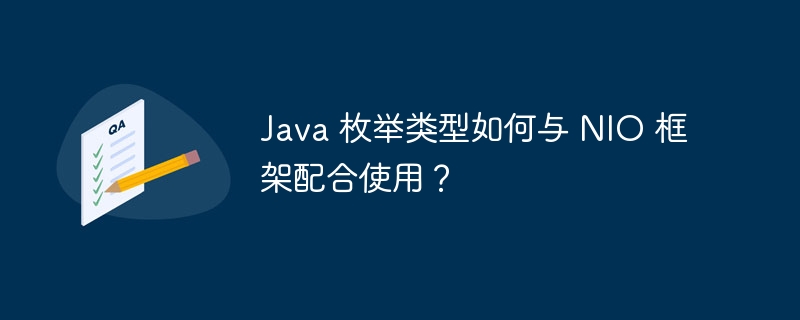
In the Java NIO framework, enumeration types are used to represent channel operation types, message types and connection status. They improve code readability, prevent errors, and enhance performance. Specific use cases include using the ConnectionState enumeration to track connection status and handling it accordingly in the handleRead and handleWrite methods.

How to use enumeration types in Java NIO framework
Enumeration types in Java is a useful tool that allows you to define a fixed, named set of constants. This is particularly useful for representing limited options or states. In the NIO framework, enumerated types can be used for various purposes, including:
Consider the following scenario: You are writing a web server that uses NIO to accept, process, and respond to client requests. You can use an enumeration type to represent the state of a connection, as follows:
public enum ConnectionState {
OPEN,
CLOSED,
SUSPENDED
} You can then use this enumeration type with a SocketChannel instance, as follows:
SocketChannel channel = ...;
channel.configureBlocking(false);
channel.register(selector, SelectionKey.OP_READ | SelectionKey.OP_WRITE);
channel.setAttribute("connectionState", ConnectionState.OPEN);In the handleAccept method, you can use enumeration types to initialize the state of the new connection:
public void handleAccept(SelectionKey key) throws IOException {
ServerSocketChannel serverSocketChannel = (ServerSocketChannel) key.channel();
SocketChannel channel = serverSocketChannel.accept();
channel.configureBlocking(false);
channel.register(selector, SelectionKey.OP_READ | SelectionKey.OP_WRITE);
channel.setAttribute("connectionState", ConnectionState.OPEN);
}In handleRead and handleWrite Method, you can check the status of the connection and take appropriate actions:
public void handleRead(SelectionKey key) throws IOException {
SocketChannel channel = (SocketChannel) key.channel();
ConnectionState state = (ConnectionState) channel.getAttribute("connectionState");
if (state == ConnectionState.OPEN) {
// 读取数据
} else {
// 忽略读取
}
}
public void handleWrite(SelectionKey key) throws IOException {
SocketChannel channel = (SocketChannel) key.channel();
ConnectionState state = (ConnectionState) channel.getAttribute("connectionState");
if (state == ConnectionState.OPEN) {
// 写入数据
} else {
// 忽略写入
}
}There are many advantages to using enumeration types with the NIO framework, including:
Using enumeration types in the Java NIO framework is a powerful technique that can improve the quality and performance of your code. By using enumeration types, you can represent various states and options, making your code more readable and reducing errors.
The above is the detailed content of How do Java enumeration types work with the NIO framework?. For more information, please follow other related articles on the PHP Chinese website!
